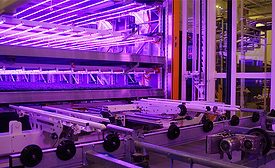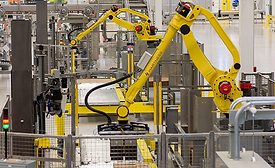Wayne Labs
Wayne Labs has more than 30 years of editorial experience in industrial automation. He served as senior technical editor for I&CS/Control Solutions magazine for 18 years where he covered software, control system hardware and sensors/transmitters. Labs ran his own consulting business and contributed feature articles to Electronic Design, Control, Control Design, Industrial Networking and Food Engineering magazines. Before joining Food Engineering, he served as a senior technical editor for Omega Engineering Inc. Labs also worked in wireless systems and served as a field engineer for GE’s Mobile Communications Division and as a systems engineer for Bucks County Emergency Services. In addition to writing technical feature articles, Wayne covers FE’s Engineering R&D section.
Senior Contributing Technical Editor
ARTICLES
45th Annual Plant Construction Survey -- FSMA and Facility Security
FSMA’s Intentional Adulteration rule is still a work in progress for some sites, meanwhile processors and retailers are eyeing indoor grow facilities
Read More
Site Locations
Key issues in locating food manufacturing sites
Based on FE’s 45th Annual Plant Construction Survey, two hot button site location topics are availability of labor and a reliable supply chain
May 19, 2022
Milk without the cow
Cell-based meats have grabbed the spotlight lately, but cell-based milk is receiving increased attention as startups get creative
May 16, 2022
Automation Trends
Automation and food processing today: It's about labor
Food processors have found labor scarce, difficult to retain and in need of ongoing training; automation can help
May 16, 2022
Artificial intelligence/machine learning reduces mistakes and waste
AI/ML systems not only use vision to guide robotics in pick-and-place, but also can simultaneously make intelligent quality decisions
May 9, 2022
Stem sell: An often-discarded mushroom part becomes a natural preservative
Startup Chinova Bioworks transforms mushroom stem fiber into a clean-label additive for food and beverage processing
April 22, 2022
Processing Tech
Digital transformation relies on smart sensor data and human inputs
Having the right tools and templates provide actionable real-time information on process, inventory and suppliers
April 20, 2022
Food companies, retailers convert sustainable talk into action
Brands that promote environmental initiatives can achieve measurable results through more sustainable inputs and products
April 15, 2022
Saving energy: Steam generators and retorts
Steam generators are efficient by design, but today’s retorts have improved efficiency, thanks to intelligent controls and ancillary equipment
March 22, 2022
Process Control
Your window to the process: Clear view or obstructed?
Today’s process control software is tasked to keep machine interfaces easy to configure for both engineers and operators
March 7, 2022
Elevate your expertise in food engineering with unparalleled insights and connections.
Get the latest industry updates tailored your way.
JOIN TODAY!Copyright ©2025. All Rights Reserved BNP Media.
Design, CMS, Hosting & Web Development :: ePublishing









